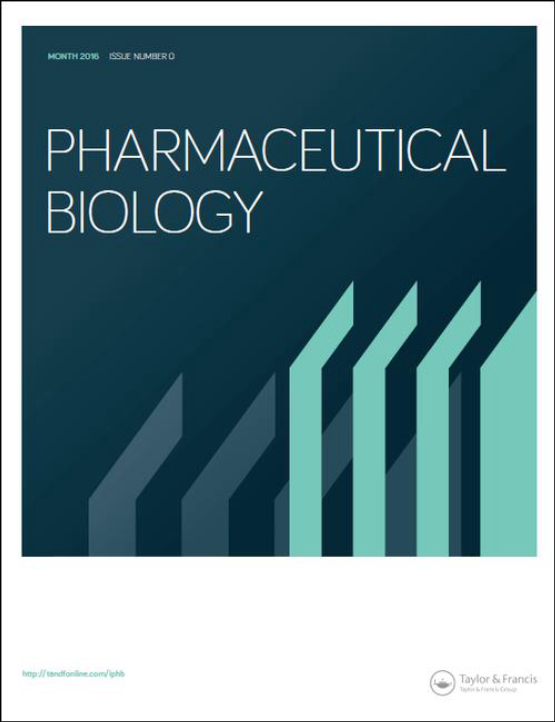Submit a Manuscript to the Journal
Pharmaceutical Biology
For an Article Collection on
Botanical Safety Consortium: Collaborative Approaches to Botanical Safety and Decision-Making
Manuscript deadline


Article collection guest advisor(s)
Prof. Igor Koturbash,
Department of Environmental Health Sciences and Center for Dietary Supplements Research, Fay W. Boozman College of Public Health, University of Arkansas for Medical Sciences, Little Rock, AR, USA
ikoturbash@uams.edu
Dr. Mitchell R. McGill,
Department of Environmental Health Sciences and Center for Dietary Supplements Research, Fay W. Boozman College of Public Health, University of Arkansas for Medical Sciences, Little Rock, AR, USA
MMcgill@uams.edu
Botanical Safety Consortium: Collaborative Approaches to Botanical Safety and Decision-Making
Article submission in this article collection is "by invitation only".
The Botanical Safety Consortium (BSC) was established in 2019 as a public–private partnership among the U.S. FDA, NIEHS, and HESI to address critical gaps in evaluating the safety of botanical products. Botanicals, including plant-, algae-, and fungi-derived ingredients, pose unique challenges for toxicological assessment because their natural complexity involves dozens to hundreds of phytochemicals that can vary with growth conditions, harvesting, and processing. This inherent variability complicates efforts to predict biological activity and interpret safety data. The BSC convenes experts from government, academia, and industry to evaluate new approach methodologies (NAMs) for botanicals. This includes in vitro, in silico, and alternative organism models to assess endpoints such as hepatotoxicity, genotoxicity, cardiotoxicity, neurotoxicity and developmental and reproductive toxicity.
Botanical products are widely consumed yet rarely evaluated with the rigor applied to pharmaceuticals or pesticides. Their variable composition, frequent use in mixtures, and limited data on long-term or population-specific risks create challenges for ensuring safety. Regulatory frameworks often rely on historical use rather than systematic toxicological evaluation, which can leave critical data gaps—particularly for concentrated extracts or novel preparations. By advancing NAMs and robust chemical characterization, the BSC is providing practical tools and data to modernize safety assessment, reduce reliance on animal testing, and better inform regulatory and public health decisions.
The following topics will be covered in this Article Collection:
- From Vision to Reality: Five Years of the Botanical Safety Consortium.
This manuscript will give an overview of the consortium and summarize the work completed the last five years to advance botanical safety - Dose-response assessment of neuroactive botanical extracts and their active constituents using microelectrode array (MEA) recordings in rat primary cortical cultures.
This research paper shows one of the assays being explored to screen botanicals for neurotoxicity - An Evaluation of the Interaction Risk Between Herbal Products and Pharmaceutical Medicines Used Concurrently for Disease Management in Blantyre, Malawi.
This research paper, part of the BSC’s global outreach is based off a survey of 300 patients taking both pharmaceutical medicines and products, exploring potential herbal-drug interactions. - Combining in silico toxicology and ADME data to predict hepatotoxicity.
This research paper will explore using constituent data from botanicals to evaluate the use of in silico tools for safety assessment - Evaluation of in vitro hepatotoxicity tools for botanicals as complex mixtures.
This research paper will qualitatively evaluate how in vitro assays already in use for single chemicals can be used for botanicals, showing data from primary human hepatocytes for endpoints including LDH release, cytotoxicity, and CYP3A4 induction and inhibition.
Please contact Catherine Teng at catherine.teng@taylorandfrancis.com with any queries regarding this Article Collection.
Keywords:
- Botanicals
- NAMs
- in vitro
- Safety
- Toxicology
- Mixtures
Benefits of publishing open access within Taylor & Francis
Global marketing and publicity, ensuring your research reaches the people you want it to.
Article Collections bring together the latest research on hot topics from influential researchers across the globe.
Rigorous peer review for every open access article.
Rapid online publication allowing you to share your work quickly.
Submission Instructions
All manuscripts submitted to this Article Collection will undergo desk assessment and peer-review as part of our standard editorial process. Guest Advisors for this collection will not be involved in peer-reviewing manuscripts unless they are an existing member of the Editorial Board. Please review the journal Aims and Scope and author submission instructions prior to submitting a manuscript.
